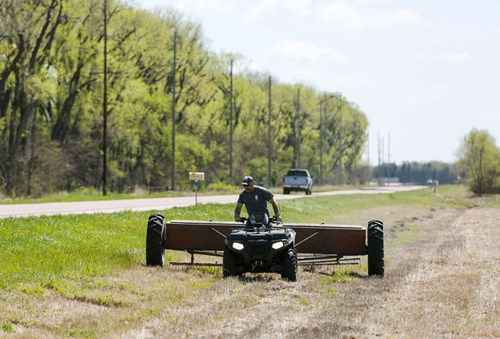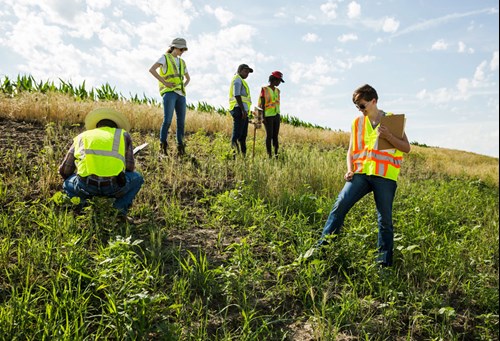
A Different Kind of Roadside Assistance
Nebraska’s roadside ecosystem is diverse and interesting. In your travels, you’ve probably noticed deer, opossums, raccoons, and birds of prey from the comfort of your vehicle. Some of the most essential – and most easily overlooked – links in this ecological chain are in trouble, and the Nebraska Department of Transportation (NDOT) is trying to help.
Pollinator populations have suffered over the last several years, due in part to destruction of their habitats. These buzzing populations pollinate more than flowers – they influence both agricultural crops and personal gardens, and research suggests they positively impact plants that don’t directly require pollination.
“The pollinator and plant relationship plays a big role in our working ecosystem here in Nebraska,” says Kayla Mollet, a master’s student in UNL’s department of entomology. With 10,000 miles of roads, and the ample right-of-ways to go with them, the NDOT is in a good position to help. Along the Cowboy Trail, NDOT has assisted Nebraska Game and Parks with mowing and spraying in preparation for seeding native, pollinator-friendly wildflowers and grasses. On Highway 75 between Union and Nebraska City, the University of Lincoln is testing islands of pollinator plants and surveying bee colonies.
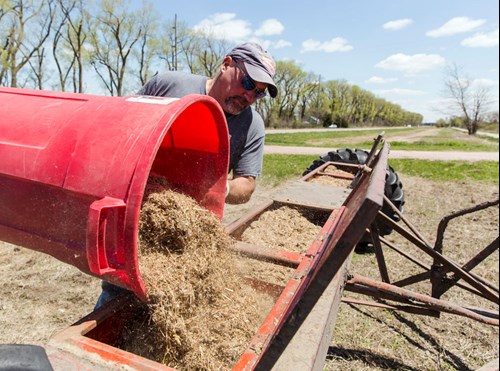 “Our roadsides can be a source of major diversity,” says Dr. Walter Schacht from the University of Nebraska-Lincoln. Schacht and his team have been researching native wildflower growth north of Nebraska City, planting test patches along the roadsides. Survival of native perennial wildflowers is an uphill battle against Nebraska grasses, he says, and a persistent population of wildflowers will assist with pollinator habitats. The university sends out a small team of surveyors a few times a month to check on growth of the patches, and to see if any bees are taking up residence nearby. The hope is that the centralized areas of flowers and pollinator-friendly plants will encourage helpful insects to stick around the area.
“Our roadsides can be a source of major diversity,” says Dr. Walter Schacht from the University of Nebraska-Lincoln. Schacht and his team have been researching native wildflower growth north of Nebraska City, planting test patches along the roadsides. Survival of native perennial wildflowers is an uphill battle against Nebraska grasses, he says, and a persistent population of wildflowers will assist with pollinator habitats. The university sends out a small team of surveyors a few times a month to check on growth of the patches, and to see if any bees are taking up residence nearby. The hope is that the centralized areas of flowers and pollinator-friendly plants will encourage helpful insects to stick around the area.
Dr. Judy Wu-Smart, an entomologist and specialist in pollinator health, joined the team in 2015 and brought a special appreciation for bees and other pollinators to the research. In her Bee Lab at UNL, Wu‑Smart and her team document the growth and health of bee colonies in the area. “Insects need plants, and plants need insects,” says Dr. Wu-Smart. Without these insect populations, the landscape of Nebraska would gravitate toward just grasses.
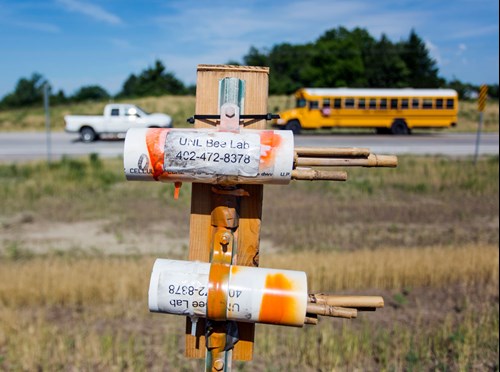 Elsewhere in Nebraska, efforts are being made to encourage butterflies to flutter by the roadside. The Cowboy Trail gallops alongside Highway 275 west of Norfolk. Here and in other areas where the 321-mile pathway travels against the state highways, drivers can expect to see brown for a while. Employees of NDOT have mowed and sprayed the existing flora to make way for pollinator-friendly native plants, an effort spearheaded by Game and Parks.
Elsewhere in Nebraska, efforts are being made to encourage butterflies to flutter by the roadside. The Cowboy Trail gallops alongside Highway 275 west of Norfolk. Here and in other areas where the 321-mile pathway travels against the state highways, drivers can expect to see brown for a while. Employees of NDOT have mowed and sprayed the existing flora to make way for pollinator-friendly native plants, an effort spearheaded by Game and Parks.
Seeding is being performed by the Prairie Plains Resource Institute (PPRI), a group hoping to encourage the resurgence of native prairie flowers and grasses. With their hammer-milled seed mix of 150 wildflowers plus the crucial milkweed pod, the seeding efforts will encourage the growth of a native Nebraskan roadside, friendly to pollinators like the Monarch butterfly. The process can be slow to show results, warns Mike Bullerman of PPRI. Bullerman, a restoration ecologist and GIS specialist, has been with the company for 17 years and has seen this kind of renewal action in the past. Bullerman laid out the seed along Highway 275 in May, but the process of planting new prairie is an involved, multi-year project. Additionally, prairie plants grow deep roots before they show much above ground growth, and only time will tell how tall some of these sprouts will become.
What can drivers expect in the right-of-ways in the years to come? “Wild Nebraska genetics,” Bullerman says. And with those wild Nebraska roadsides, more Monarchs, bees, and other pollinators.
